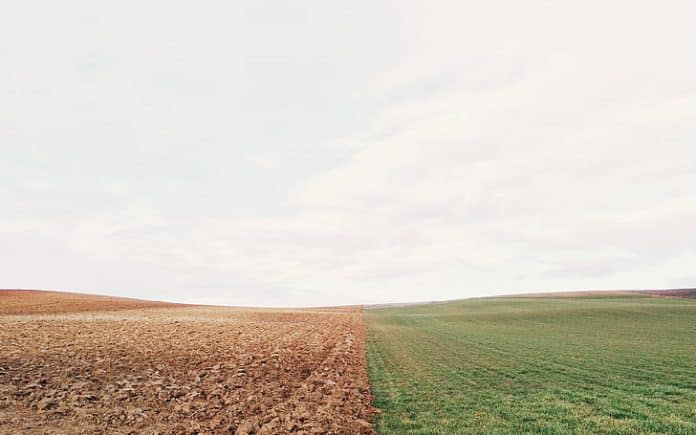The competitive demand for agricultural land was discussed at the 2016 Agri SA congress by a panel of experts on the subject. Among others, the panel consisted of Dr Gerhard Verdoorn, director of the Griffon Poison Information Centre, Dr Victor Munnik, researcher in geography and environmental studies at the University of the Witwatersrand (Wits) and Derek Light, an attorney involved in environmental research.
Large tracts of land rich in natural resources have been used for mining, in which case it directly competes with the agricultural industry for available land. In certain cases, this is done with dire consequences to the environment and a complete disregard for proper licensing. Furthermore, land that has been used for mining can never be rehabilitated for agricultural use and has long-lasting effects on biodiversity and food security.
There is, however, a third major competitor for land, namely role-players involved in the conservation of natural habitats and the rich biodiversity of South Africa. Not only mining, but also agriculture threatens the delicate balance required for a healthy environment. Preserving our country’s natural resources is also vital for the survival of our booming tourism industry.
The mining, agricultural and tourism industries all contribute significantly to the local economy. Can a balance be achieved in dividing South Africa’s land and water equally to support these three industries? And how can this be done in a way that ensures food security and preserves the environment?
The coal mining industry
According to Statistics South Africa (Stats SA) the mining industry contributes an average of R23 4270,15 million to the country’s gross domestic product (GDP). In comparison, the average GDP of R58 064,83 million derived from agriculture might not seem as impressive, but agriculture feeds the nation.
The damaging effects that mining has on the environment puts its value into question. The industry often contaminates water resources, leaves land infertile or eroded and pollutes the air. As was discussed by the panel, this is especially true for coal mining and fracking to excavate shale gas. Mining activities are also often conducted without the necessary licences to mine and use water. Areas demarked for conservation are also often mined on without permits, thereby violating several environmental acts.
Dr Munnik believes mining is unfairly privileged in land use decisions, without applying for proper licencing. At the congress, Munnik shared the findings of a 2016 study entitled ‘Zero Hour: Poor Governance of Mining and the Violation of Environmental Rights in Mpumalanga’, conducted by the Centre for Environmental Rights (CER). The study illustrates unfair land use by the mining industry and its devastating effect on agriculture in the province.
According to the report, “the Department of Mineral Resources (DMR) grants rights for mining without having regard for the cumulative impact on water resources, biodiversity, air quality and food security, nor the health or wellbeing of affected communities, despite the consideration of these factors being required by law.”
A practical example
“In 2013, the Federation for a Sustainable Environment (FSE) addressed letters to the DMR and the Department of Water Affairs (DWA), alleging that Umsimbithi Mining (Pty) Ltd (Wonderfontein Colliery) operating on a farm in Mpumalanga, was conducting its mining activities in contravention of the Mineral and Petroleum Resources Development Act, 2002 (Act 28 of 2002) (MPRDA), National Environmental Management Act, 1998 (Act 107 of 1998) (Nema), the National Water Act, 1998 (Act 36 of 1998) (NWA) and others.
“The FSE alleged that Umsimbithi was using water for mining purposes even though its water use licence (WUL) had been suspended. Under the NWA, a WUL is suspended when an appeal has been lodged against a decision to grant the licence, pending the outcome of such appeal. The FSE had lodged an appeal against the DWA’s decision to grant the WUL in 2013, which has to date not been decided.
“The FSE also alerted the DWA about the company using water in contravention of the WUL by conducting mining operations within 500m of a wetland – an activity explicitly prohibited under the WUL.
“In addition, Umsimbithi was using the land for mining, whereas it was zoned solely for agriculture in the Emakhazeni Municipality’s land use scheme. The DMR failed to respond to FSE’s letter, nor to its follow-up letters and has, to date, not conducted a site inspection or taken any other action in response to these allegations.” (CER, 2016).
Fracking in the Karoo
There has been great interest in the deep shale gas reserves in the Karoo, and several companies have applied to commence unearthing this by utilising the hydraulic fracturing process to explore for and – if viable reserves were established – produce methane gas from these reserves. According to Light, also involved in research on fracking in the Karoo, this followed in the wake of a wealth of concerns and objections raised by interested and affected parties, including agricultural landowners.
Light shared some of these concerns at the congress:
- The lack of meaningful legislation and regulation.
- Lack of compliance with already inadequate legislation.
- Potential negative impact on water quality and reserves in a water-scarce region.
- Limited scientific knowledge on the potential impacts on the environment and the geohydrology of the Karoo.
Threat to the agri industry
High-value agricultural land is a very limited resource in South Africa. This is according to Steve Galane, director of communication services at the Department of Agriculture, Forestry and Fisheries (DAFF). According to a recent study, the total land area with a moderately high to high land capability for agricultural purposes is 11,6 million hectares, less than 10% of the surface area of the country.
A study conducted by the department in 2011 indicated that more than two million hectares of arable land have already been permanently converted to other land uses. Mining is one of the land uses threatening the wellbeing of land. “Currently mining is ploughing ahead with a devastating effect, without taking biodiversity, farming and water catchments into consideration,” noted Dr Verdoorn, an environmentalist and agriculturist.
The CER study reports that Mpumalanga produces a significant proportion of South Africa’s staple foods, such as soya beans, maize and dry beans. However, the unbridled expansion of mining in this province is eroding its arable land, and there are rising concerns over the impact of mining on agricultural production. Water, soil and air pollution from mining affect agricultural yields, posing a threat to food and water security.
As emphasised by Light, the Karoo makes a massive contribution to local food security and the economy with its high meat, wool and mohair production. Fracking threatens agriculture in this region by competing for land and the already limited resource of groundwater, with the potential of contaminating water resources.
Impact of agriculture
If responsible farming practices are not the rule, agricultural activities can be very destructive to the environment and can have a devastating effect on biodiversity. “Harmful agricultural practices such as the misuse of pesticides and poisons to kill predators have a chain reaction in the environment, killing numerous mammals, birds and even reptiles. Total habitat transformation also impacts grossly on biodiversity as it denudes the habitat of vegetation supporting animal life.
“The current practices of dividing large natural areas into small camps for intensive breeding of game is another example of damaging agricultural practices that impact on biodiversity. There are numerous examples of bad agricultural practices, but just as many examples of good ones which contribute to biodiversity conservation.”
Agriculture also requires large amounts of water, and producers were reminded of this fact – and several other damaging effects on the environment – by Dr Morné du Plessis, CEO of the World Wide Fund for Nature (WWF) South Africa, who was also present at the congress.
Importance of conservation
Ecological biodiversity is the support base for all life forms, including the human species. Without biodiversity, there would be very little to support humankind. Dr Verdoorn explained that biodiversity is not simply a diversity of species, but includes the diversity of landscapes, ecological regions, the diversity of habitats within ecoregions, species within habitats and genotypes within species.
“Tourism contributes 10% to the GDP – more than mining which has declined to levels below this figure. The sector is therefore also important to the local economy. South Africa’s popularity is thanks to our rich biodiversity of mountains, deserts, oceans and animal life. According to Verdoorn, conservation and agriculture, if managed correctly, can be both sustainable and very often complementary. Mining, however, is not.
Legislation regulating land use
“Currently there is no protection of conservation and agricultural land,” says Verdoorn. At present, DAFF administers the Subdivision of Agricultural Land Act, 1970 (Act 70 of 1970) (SALA), the objective of which is to control the subdivision and use of agricultural land.
According to Galane, “the act is ‘old order’ legislation not applicable to state land and state-owned entities, and mining applications are exempted from it. Therefore, agricultural land in these areas are subjected to conversion to other land uses. The resulting loss and fragmentation of agricultural land impact negatively on the sustainability of agro-ecosystems and agricultural production.”
However, a new agricultural land development and preservation policy and bill has been proposed to preserve and develop agricultural land. “The purpose of the bill and policy is to ensure that such land achieves its productive capacity to ensure that sufficient land is made available for food production to support national and household food security. The bill will also promote a balanced approach to the use of agricultural land in South Africa.
“In addition, the bill makes provision for the demarcation of agriculturally protected areas and the establishment of an agricultural land register. This will provide a more proactive approach and assist in improving the management of agricultural land in the country.”
The policy and bill were gazetted for public comment on 2 September 2016. The department is currently processing the written inputs received as well as those received during the workshops. The intention of the department is to submit the final draft policy and bill for the preservation and development of agricultural land to the cabinet during the 2017/18 financial year. The completion of this process will depend on the parliamentary processes which are outside the control of the department.
Can balance be achieved?
Dr Verdoorn suggests that there must be a national plan in place which identifies biodiversity hotspots, prime agricultural land and prime mineral resources. “The plan should firstly ensure that biodiversity hotspots are protected against any invasive land use such as mining and unsustainable agriculture. Thereafter, prime agricultural land must be identified and protected against invasive land use practices such as open-cast mining.
“Once this is achieved, mineral resources can be developed under strict policies and guidelines to prevent downstream knock-on effects on biodiversity hotspots and prime agricultural land.” – Ursula Human, FarmBiz


